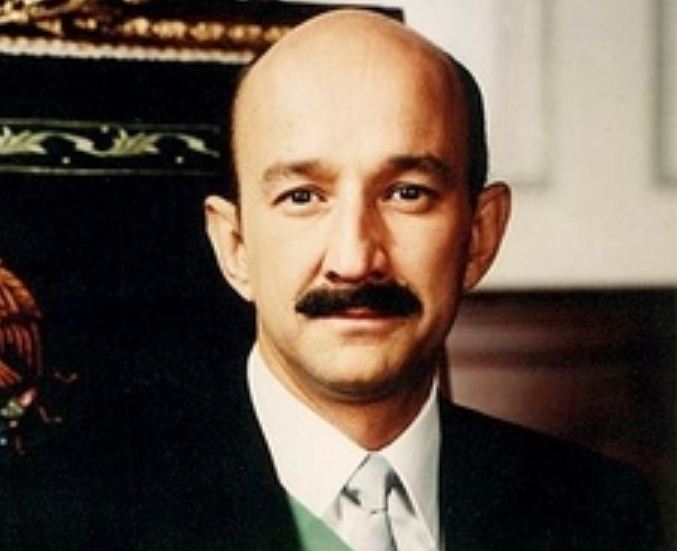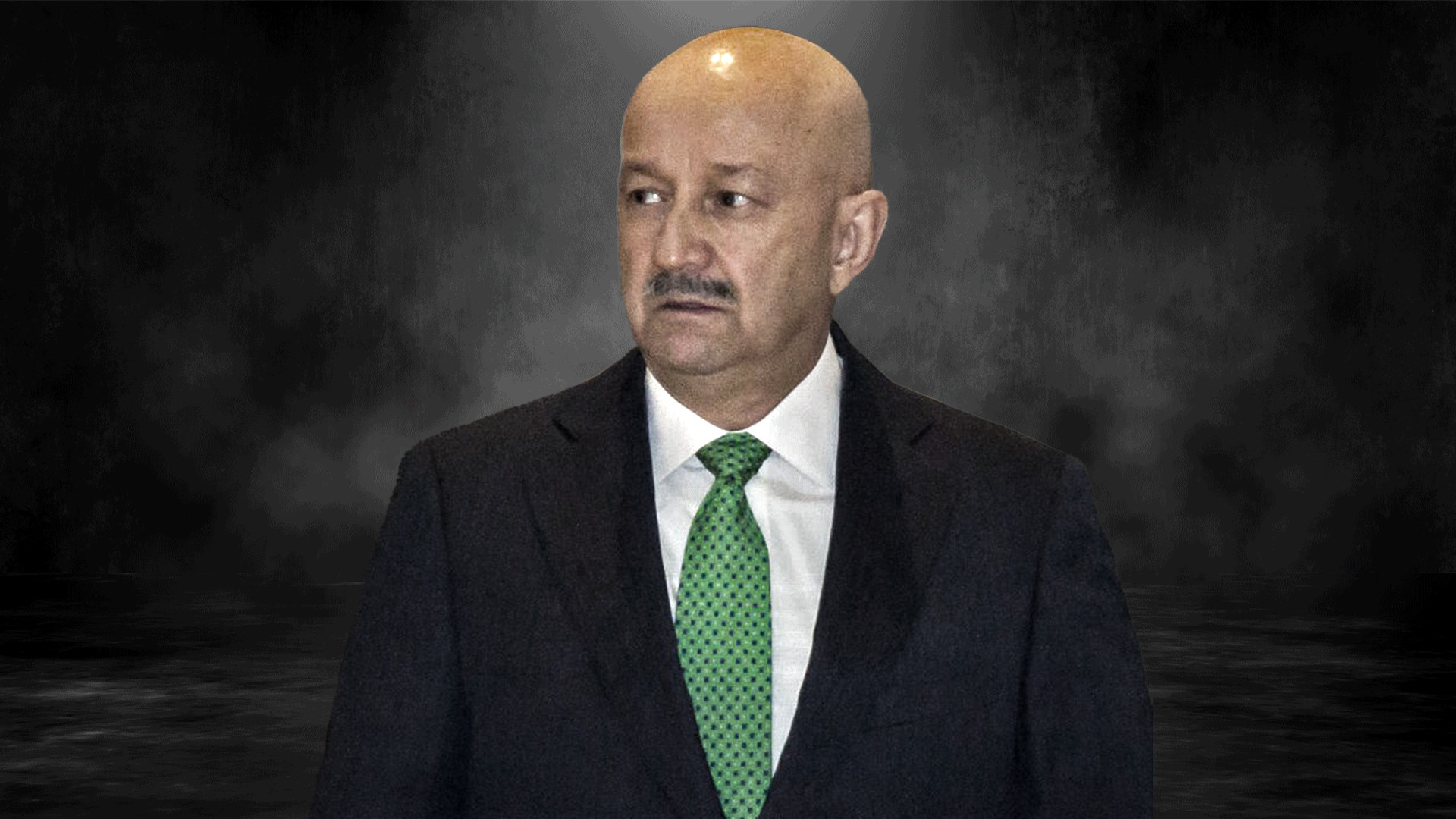Carlos Salinas De Gortari Net Worth: The Surprising Facts
Is it possible to accurately gauge the wealth accumulated by a former head of state, especially when considering the complexities of international finance, alleged corruption, and the passage of time? The truth is, determining the precise net worth of Carlos Salinas de Gortari, the former President of Mexico, remains an exercise fraught with challenges, speculation, and a frustrating lack of definitive answers, making any concrete figure an approximation at best.
The financial landscape surrounding Carlos Salinas de Gortari is undeniably complex. His tenure as President from 1988 to 1994 coincided with significant economic reforms in Mexico, including privatization of state-owned industries, deregulation, and increased foreign investment. These policies undeniably created opportunities for wealth accumulation, both for individuals within the government and those connected to it. However, the details of this wealth, its origins, and its current status are shrouded in layers of controversy, legal battles, and enduring public scrutiny. While estimates abound, ranging from the reasonable to the wildly inflated, a truly accurate accounting is elusive. The core issue lies in the opaque nature of international finances and the inherent difficulties in tracing assets, particularly when they might be hidden offshore or disguised through complex financial instruments. Furthermore, allegations of corruption during his presidency cast a long shadow, raising questions about the ethical and legal origins of any wealth he may have amassed.
The subject of Carlos Salinas de Gortari's net worth is a recurring theme in Mexican and international media, fueled by public interest, political rivalries, and the constant search for transparency. Journalists and investigators have meticulously scrutinized his business dealings, family connections, and lifestyle, yet definitive conclusions remain elusive. This persistent uncertainty only reinforces the intrigue and fuels the perception that significant wealth has been accumulated, although the exact figures remain a matter of conjecture. Let us consider what is known, and what is only rumored, about the man at the center of this financial puzzle.
| Full Name: | Carlos Salinas de Gortari |
| Born: | April 3, 1948 |
| Place of Birth: | Mexico City, Mexico |
| Education: | Bachelor's in Economics (National Autonomous University of Mexico), Master's and PhD in Political Economy and Government (Harvard University) |
| Political Affiliation: | Institutional Revolutionary Party (PRI) |
| Presidential Term: | 1988 - 1994 (Mexico) |
| Key Policies: | Economic Liberalization, Privatization, NAFTA (North American Free Trade Agreement) |
| Post-Presidency Activities: | Consulting, Academic Pursuits, Author |
| Family: | Married to Cecilia Occelli; three children |
| Controversies: | Allegations of corruption, involvement in the assassination of his brother-in-law and PRI leader Jos Francisco Ruiz Massieu, economic policies leading to the 1994 peso crisis |
| Estimated Net Worth: | Varies widely depending on source and methodology; exact figures are highly disputed. (See Note below) |
| Reference: | Wikipedia - Carlos Salinas de Gortari (Note: Use Wikipedia as a starting point for research, but verify information with multiple reliable sources.) |
The economic policies pursued during the Salinas administration were radical. The privatization of state-owned enterprises including banks, telephone companies, and the steel industry fundamentally reshaped the Mexican economy. This wave of privatization, while lauded by some as a necessary step towards modernization and efficiency, also raised serious questions about the transparency of the process and the potential for corruption. Critics pointed to the beneficiaries of these privatizations, alleging that cronyism and political favoritism played a significant role in determining who acquired these valuable assets. The rapid accumulation of wealth by a select few during this period further fueled these suspicions.
One of the most significant legacies of the Salinas presidency was the North American Free Trade Agreement (NAFTA), which eliminated tariffs and trade barriers between Mexico, the United States, and Canada. While NAFTA undoubtedly fostered economic integration and increased trade, it also had its detractors. Some argued that it led to job losses in certain sectors, while others pointed to the exacerbation of income inequality within Mexico. The effects of NAFTA, both positive and negative, continue to be debated to this day. The economic impact of NAFTA would likely have a direct impact on the wealth creation during that period. However, there is no direct correlation.
The 1994 peso crisis, which occurred shortly after Salinas left office, further clouded the economic picture. The devaluation of the Mexican peso led to a severe economic downturn, wiping out savings and causing widespread hardship. The crisis raised questions about the government's management of the economy and the sustainability of its policies. While Salinas was no longer president at the time of the crisis, the policies he implemented were widely blamed for creating the conditions that led to the collapse. Accusations of mismanagement and potential insider trading further fueled public distrust and heightened the scrutiny of Salinas's personal finances.
Following his presidency, Salinas de Gortari retreated from the public eye, though he has remained a figure of significant interest. He has pursued academic endeavors, teaching at universities and writing books on political and economic topics. He has also engaged in consulting work, lending his expertise to various businesses and organizations. The nature of his consulting activities and the identities of his clients have been subjects of speculation and debate, particularly given his past political connections. Public information related to these is quite limited.
The allegations of corruption that have followed Salinas throughout his career are numerous and serious. These include accusations of illicit enrichment, the misappropriation of public funds, and influence peddling. While he has consistently denied these allegations, they have persisted and continue to be a major factor in the public perception of his financial affairs. Perhaps the most damaging association, albeit one he denies, is with the suspicious death of his brother-in-law, Jos Francisco Ruiz Massieu, who was assassinated in 1994. The circumstances surrounding the assassination have raised serious questions about Salinas's potential involvement, indirectly raising the specter of his financial dealings.
The question of Salinas's net worth is complicated by the absence of definitive evidence and the inherent challenges of transparency. It's important to consider the various sources that have offered estimates, while acknowledging their limitations. Some media outlets and investigative journalists have attempted to calculate his net worth, often relying on publicly available information, property records, and analysis of his business interests. However, these estimates are inherently speculative, as they are limited by the lack of access to complete financial information.
Official financial disclosures are not typically required of former heads of state, especially once they are out of office, which adds to the difficulty in obtaining accurate figures. Moreover, assets may be held in various ways, including through family members, shell corporations, or offshore accounts, making them even more difficult to trace. The complexities of international finance and the willingness of some individuals to go to great lengths to conceal their wealth further complicate the process of determining his net worth. Any estimate should be considered with caution.
The varying estimates of Carlos Salinas de Gortari's net worth highlight the challenges of assessing the financial status of a public figure, especially one embroiled in controversy. The estimates range wildly. Some figures are based on speculative assumptions, others on analysis of available public data, while others are based on information provided by anonymous sources. Without a clear understanding of his financial dealings, it is extremely difficult to arrive at a reliable valuation. Publicly available sources paint a picture of considerable wealth, the exact source of which remains unclear.
Beyond the financial figures themselves, the case of Carlos Salinas de Gortari also illustrates the broader issues of corruption, accountability, and transparency in government. The public's enduring interest in his financial affairs reflects a deep-seated concern about the misuse of power and the potential for illicit enrichment. It serves as a reminder of the importance of ethical conduct, the rule of law, and the need for open government to ensure the integrity of democratic institutions. The pursuit of financial accountability is, in essence, a pursuit of justice and fairness.
Ultimately, determining the true net worth of Carlos Salinas de Gortari remains an ongoing investigation, a puzzle with many missing pieces. Despite the persistent efforts of journalists, investigators, and the public, a definitive answer remains elusive. The legacy of his presidency, and the ongoing scrutiny of his financial affairs, serves as a potent reminder of the complexities of power, wealth, and the enduring quest for transparency.
The persistent uncertainty surrounding Carlos Salinas de Gortari's net worth serves as a lesson in the importance of financial transparency, particularly for those who hold positions of power. The lack of clear and verifiable information breeds suspicion, fuels rumors, and undermines public trust. It emphasizes the need for robust regulations, independent oversight, and a culture of accountability to ensure that public officials are held to the highest ethical standards. This lack of information is not simply an accounting problem; it is a matter of public trust and the integrity of democratic institutions.
The economic landscape of Mexico during the Salinas years underwent a dramatic transformation. The shift from a state-controlled economy to a more market-oriented system presented both opportunities and challenges. While the privatization of state-owned enterprises and the deregulation of industries were intended to spur economic growth, they also created the potential for corruption and the concentration of wealth in the hands of a few. The benefits of these policies were unevenly distributed, and the negative consequences, such as job losses and social unrest, often fell disproportionately on the most vulnerable segments of society. The relationship between these economic shifts and the personal wealth accumulation of key figures, including the President, remains a subject of debate and scrutiny.
The involvement of high-profile individuals and institutions in the financial dealings of Carlos Salinas de Gortari further complicates the narrative. The alleged connections to prominent business figures, politicians, and international financial institutions add layers of complexity to the investigations. These connections can potentially facilitate access to investment opportunities, provide protection from scrutiny, or even enable the concealment of assets. The interplay of these factors makes it extremely difficult to isolate any single factor or figure.
The legacy of Carlos Salinas de Gortari and his presidency continues to shape the political and economic landscape of Mexico. His policies and their consequences remain hotly debated, and the controversies surrounding his personal finances have only served to intensify public interest in his activities. The enduring questions about his wealth, its origins, and its ultimate status serve as a continuing reminder of the importance of transparency, accountability, and the unwavering pursuit of truth in a democracy.
In conclusion, the question of Carlos Salinas de Gortari's net worth is not merely a matter of numbers. It is a window into the dynamics of power, corruption, and economic change in Mexico. While a definitive answer remains elusive, the ongoing investigations, the media scrutiny, and the public interest serve as a reminder of the importance of transparency and accountability in government. The pursuit of financial information, even when it proves difficult, is a critical element in the ongoing effort to uphold the principles of democracy and the rule of law. Ultimately, the quest to understand his wealth mirrors a deeper, more fundamental quest: to understand the relationship between power, wealth, and the public good.



